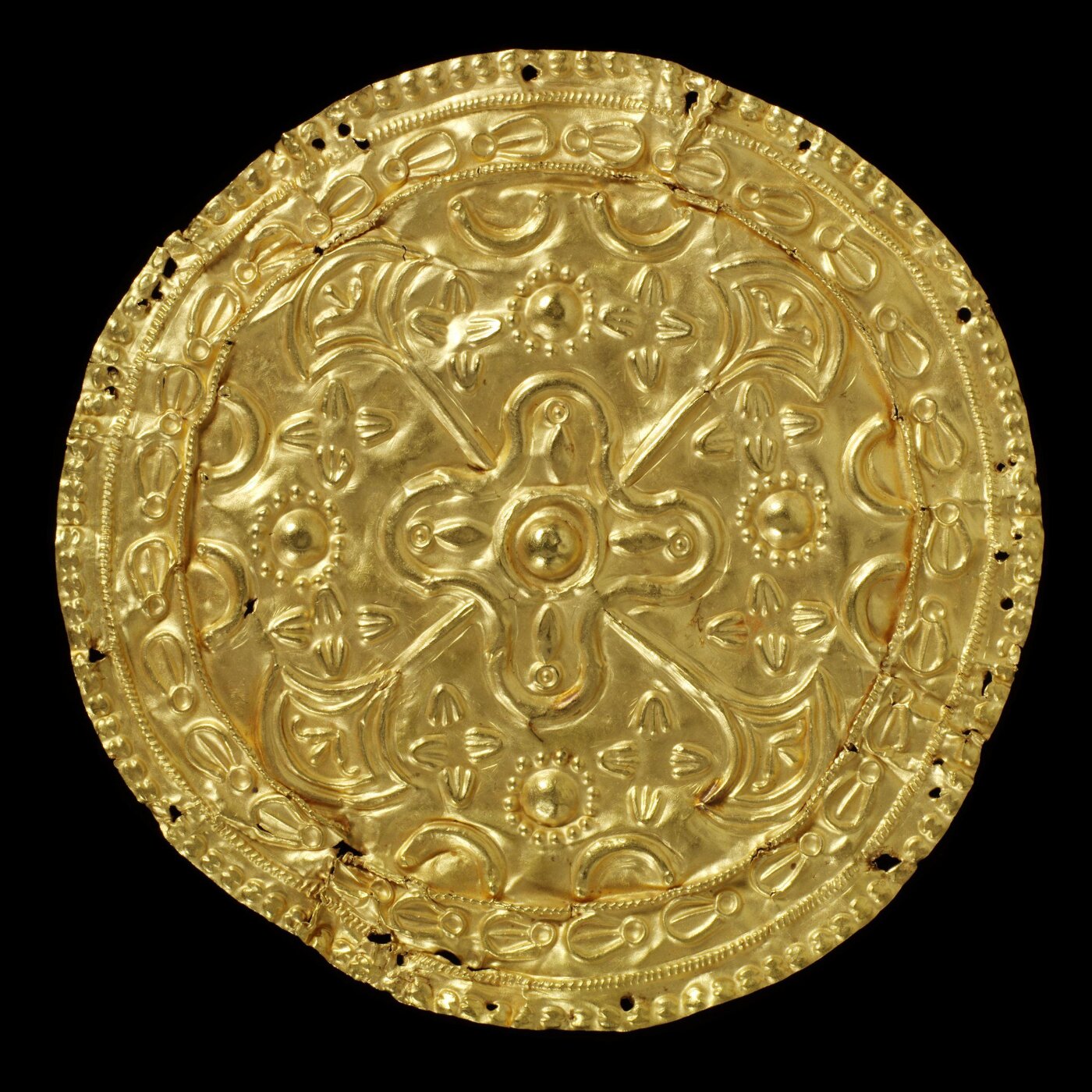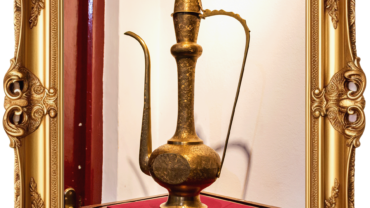Early European visitors to Asante, West Africa, described dazzling displays of royal regalia at the court of the Asantehene, the ruler of the Asante state. The region’s natural gold resources had made the Asante wealthy and court regalia, which included textiles (kente) and gold, reflected high levels of skill and technology. This thinly-beaten, rectangular gold ornament has holes pierced into it suggesting it was once threaded to a canopy or an item of furniture in the Asante court. The design ends abruptly and the edges are ripped suggesting it was forcibly removed.
During the Anglo-Asante wars of the nineteenth century, Britain looked to exert increasing dominance over the coastal trading forts along the shoreline of modern day Ghana, West Africa. On 4 February 1874, in a declaration of imperial power following Asante efforts to protect the port of Elmina over which they had a longheld claim, British forces under the command of Major-General Sir Garnet Wolseley launched a ‘punitive raid’ on the Asante state capital, Kumasi. Faced with overwhelming odds and the impossible demand for an indeminity of 50,000 ounces of gold, the Asante king (Asantehene), Kofi Karikari, fled. To suppress any resurgence of Asante authority, Wolseley ordered troops to plunder the royal regalia and destroy the town. The gold regalia was shipped back to England and sold at Garrard’s the Crown Jewellers in London in April 1874 where the V&A bought 13 items including this gold ornament.






